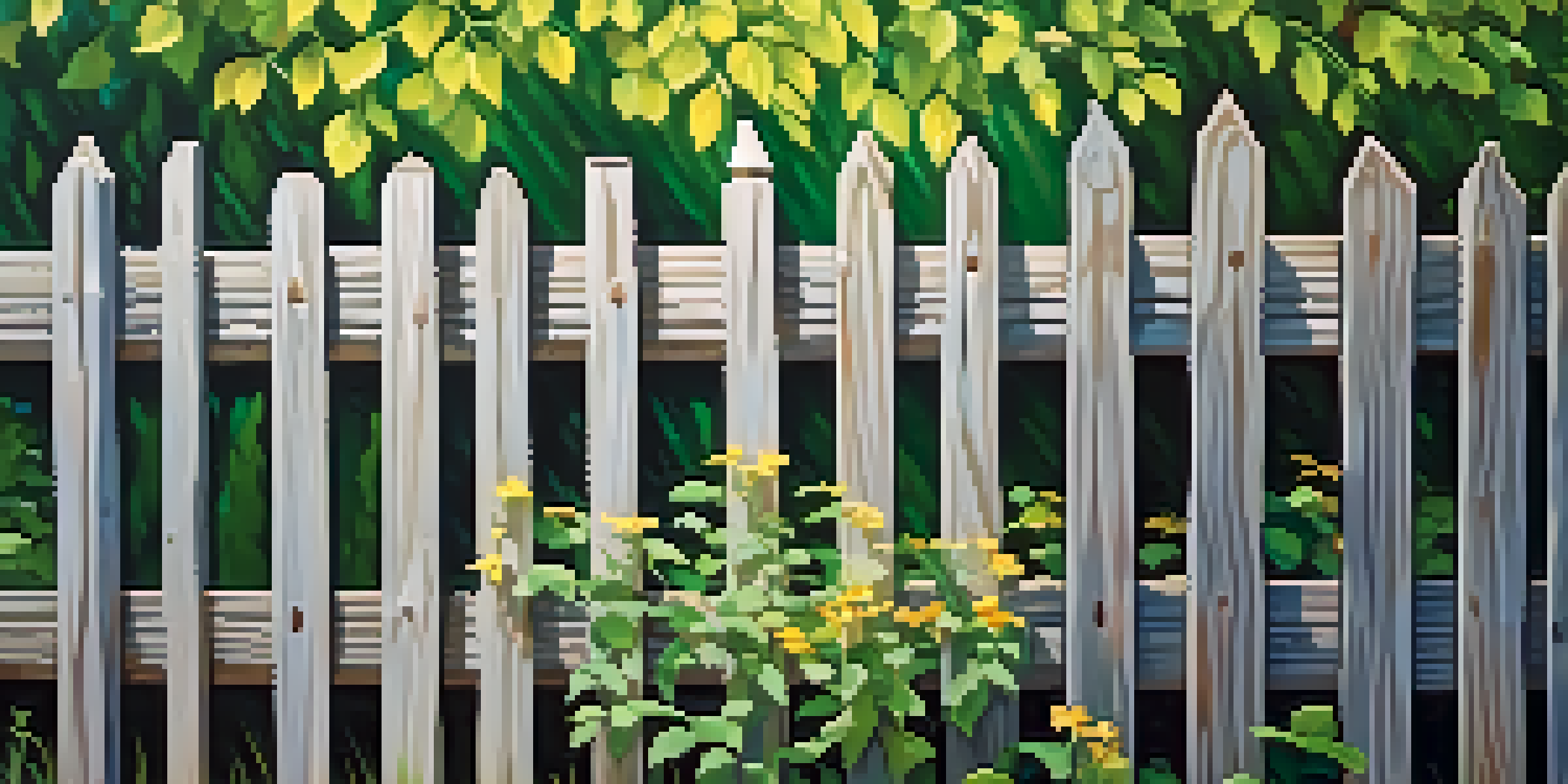Spring Fence Maintenance: Essential Tips for Homeowners

Why Spring is the Perfect Time for Fence Maintenance
As winter melts away, spring offers the ideal opportunity to assess your fence's condition. Snow, ice, and harsh weather can take a toll on your fencing, leading to potential issues that could worsen if left unaddressed. By starting your maintenance in spring, you can ensure your fence is ready to withstand the upcoming summer months.
An ounce of prevention is worth a pound of cure.
Spring maintenance also allows you to catch minor problems before they escalate. For instance, a small rust spot or loose board can quickly become a major repair if ignored. Taking a proactive approach not only saves you time but also money in the long run.
Moreover, a well-maintained fence enhances your home's curb appeal. Whether you have a wooden, vinyl, or metal fence, a little spring TLC can make a significant difference in how your property looks. Think of it as giving your home a fresh start for the new season!
Inspecting Your Fence for Damage and Wear
The first step in your spring fence maintenance routine is a thorough inspection. Walk around your property and look for any signs of damage, such as rotting wood, rust, or loose panels. Pay attention to areas that are prone to moisture, as these spots are often the first to show wear and tear.

Don't forget to check the posts, as they provide the necessary support for your fence. If a post is leaning or showing signs of decay, it may need to be replaced or reinforced. Taking the time to inspect every component will help you identify potential issues early on.
Spring is Ideal for Fence Maintenance
As winter fades, spring provides the perfect opportunity to inspect and maintain your fence, preventing minor issues from escalating.
Lastly, assess the surrounding environment. Overgrown vegetation can put pressure on your fence, so it's wise to clear any plants or branches that may be encroaching. A clear perimeter not only protects your fence but also allows for easier maintenance.
Cleaning Your Fence: The Key to Longevity
Once you've inspected your fence, it's time to roll up your sleeves and give it a good cleaning. Dirt, grime, and algae can build up over time, making your fence look aged and worn. Use a pressure washer or a simple garden hose with soapy water to remove debris and restore its appearance.
The best time to plant a tree was 20 years ago. The second best time is now.
For wooden fences, be careful not to use too much pressure, as this can damage the wood. Consider using a soft-bristle brush for stubborn spots. If you notice any mold or mildew, a mixture of vinegar and water can be an effective natural cleaner.
Cleaning not only enhances the visual appeal but also helps prevent decay and prolongs the life of your fence. A clean surface allows for better paint or stain adhesion if you decide to refresh the color, so you can enjoy a beautiful fence for years to come.
Repairing Common Fence Issues in Spring
After cleaning and inspecting, you might discover some issues that require repair. Common problems include loose boards, rusted metal, or cracks in vinyl fencing. Addressing these issues promptly can prevent further damage and maintain your fence's integrity.
For wooden fences, replacing individual boards is a straightforward task. Simply remove the damaged board and install a new one, ensuring it's treated to resist weather and pests. For metal fences, rust can often be sanded down and painted with a rust-inhibiting primer to restore its strength.
Regular Inspections Prevent Damage
Conducting seasonal inspections and cleaning can help catch problems early, ensuring your fence remains strong and beautiful throughout the year.
If you encounter more significant issues, such as leaning posts, consider reinforcing them with concrete or even replacing them entirely. Taking the time to make these repairs in the spring will ensure your fence stands strong throughout the year.
Staining or Painting Your Fence This Spring
Spring is also an excellent time to refresh your fence's appearance with a new coat of stain or paint. This not only enhances the aesthetic but also provides a protective barrier against the elements. A well-painted or stained fence can resist moisture, UV rays, and pests, extending its lifespan.
Before applying a new coat, ensure your fence is clean and dry. If you're using stain, choose a product that suits your wood type and desired finish. For painted fences, opt for exterior paints that can withstand weather changes and fading.
Remember that proper application is key. Take your time to apply even coats, and don't rush the drying process. A little care goes a long way in achieving a beautiful and durable finish that you'll enjoy for years to come.
Installing or Replacing Fencing: A Spring Project
If your fence is beyond repair, you might consider installing a new one this spring. This can be an exciting project that adds value to your home and enhances your outdoor space. Before diving in, research the types of materials available and choose one that fits your needs and budget.
When installing a new fence, it's crucial to check local regulations and obtain any necessary permits. Understanding property lines is also essential to avoid disputes with neighbors. A friendly chat with them can go a long way in ensuring everyone is on the same page.
Refresh Your Fence with Staining
Applying a new coat of stain or paint in spring not only enhances your fence's appearance but also protects it from the elements.
Once you've got the green light, gather your tools and materials. Whether you choose wood, vinyl, or metal, each option has its benefits, so consider what will best suit your lifestyle. A well-installed fence not only provides security but also adds charm to your property.
Maintaining Your Fence Year-Round: Best Practices
While spring is the perfect time for maintenance, it's essential to keep your fence in good shape throughout the year. Regular inspections every season can help you catch issues early before they turn into costly repairs. A little diligence goes a long way in maintaining your fence's beauty and strength.
In addition to inspections, consider seasonal cleaning. Removing debris, leaves, and snow from your fence can prevent moisture buildup and damage. This simple practice can save you time and effort in the long run.

Finally, don't forget to touch up any paint or stain as needed. By staying on top of these maintenance tasks, you can ensure your fence remains a proud feature of your home for years to come.